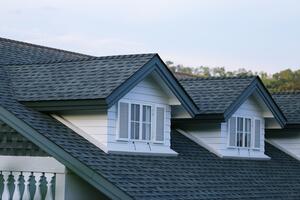Your roof is an incredibly important part of your home's exterior. It takes on the brunt of what nature can throw at it and yet can still last for decades depending on the installation and materials. However, roofs are also susceptible to a variety of small problems. While these problems aren't always huge, they can spiral out of control if ignored.
Would you rather repair a few cracks today and replace your roof in a few decades, or would you rather ignore those cracks and replace your roof in only a few years? I suspect that the first option sounds far more appealing. With that in mind, here are ten problems to look out for so you can repair your roof before more serious and costly damage occurs:

1. Roof leaks:
Leaks can be pervasive issues that are often quite hard to detect. Where you see the leak in your home is not always where the leak is on the outside. Most leaks are located near the chimney, under damaged shingles, at flashing points, at skylights, near the gutters, or in low spots. If you have a roof leak or think you might then you need to take immediate action. If you ignore a leak it will only get worse.
2. Pooled roof water:
Even if you don't have a leak yet, you need to be careful if you notice water starting to pool on your roof (especially if you have a flat roof. This build-up often signals a roof or gutter problem and can lead to a leaking roof as the water finds small openings into your home or makes its own.
3. Hail damage:
No roof likes a hail storm. Hail storms consistently cause widespread damage to the entirety of the roof. The impact of each hailstone damages and cracks the shingles, leading to more problems down the line, most noticeably leaks. Often hail damage consists of bruising and discoloration on the surface of the shingle, which can be difficult to notice from the ground. This is why it is generally recommended you have your roof inspected by an experienced professional following a hail storm even if you see no sign of damage.
4. Punctures/penetrations:
Storms and wildlife can scrape and puncture your roof. Whatever the reason for the puncture or penetration, these holes build up over the years and expose vulnerable building materials to the elements, facilitating wood rot and roof leaks.
5. Cracks:
Roofs take the brunt of what nature can throw at them. This means that they can develop cracks, although some roof materials are more susceptible than others. These cracks make your home more vulnerable to future roof damage, especially leaks.
6. Ice/Snow Damage:
Ice and snow can cause serious damage to a roof over time. As the ice and snow built up on your roof melt they become water which can creep into your home through leaks, make existing leaks worse, or simply gather beneath your shingles. If this water refreezes then it might push up your shingles and leave gaps.
7. Flashing damage:
Flashing serves an important role as a way to keep water away from vulnerable building materials. This means that damage to the flashing (or improper installation) can leave important roofing materials vulnerable.
8. Vent problems:
Roof vents are an important part of any roofing system, but they can cause a wide range of roofing issues. If improperly screened then animals and insects can use the vents to enter the attic. Blocked vents, or simply a lack of proper ventilation, can also cause a variety of other issues.
9. Too many roof layers:
Another common issue for many roofs is the presence of too many layers. While asphalt shingle roofs can have multiple layers most other roofing materials perform best with only a single layer. In fact, even asphalt shingle roofs can use no more than two layers according to many building codes. Ignoring these guidelines may lead to many issues like inadequately anchored and uneven roofing shingles.
10. Blow off damage:
Another common issue, especially for shingle roofs, is blow off damage. Fierce winds can sometimes take off whole shingles, leaving the more sensitive parts of your roof vulnerable.
Start your roof repair project today
Hopefully knowing what to look for will help you avoid roof damage in the future. If you notice any of these issues then the best option is to contact a local roof repair professional for an inspection and estimate.



